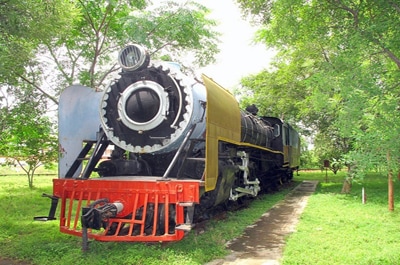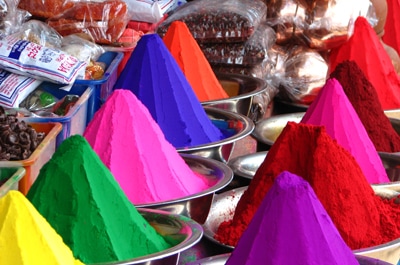Avadhoota Datta Peetham |
Sri Sri Ganapathi Sachchidananda Swamiji is the head of Avadhoota Datta Peetham in Mysore. Swamiji was born at Mekedaatu, Kanakapura district of Karnataka, India on 26 May 1942. Swamiji works for popularisation of "Raagaragini Vidya", an ancient musical tradition that is claimed to augment spiritual Sadhana and cure ailments. Swamiji established 78 Ashrama Branches all over the world. The Sri Krishnadevaraya University has conferred a Ph.D for Swamiji's work on Ragaragini healing i.e.," RAAGARAGINI NADA CHIKITSA YOGAMU". He conducts tours of the world to spread spirituality and holds concerts believed to provide healing benefits.[1] He combines his music therapy with ayurveda, psychology, gem therapy, and astrology. He has opened an old age home in Hyderabad. The project was titled 'Ammavodi'. Sri Swamiji has organized and been maintaining Gnana, Naada, Bhakthi, Yoga sabhas, in many places all over the world. In 2014, he opened an aviary called Shuka Vana, which covers an area of one acre and hosts more than 1000 birds in 290 species, especially parrots. It houses also a hospital for sick and injured birds. Sri Swamiji has established Bonsai Garden in Mysore called "Kishkindha Bonsai Garden" and hosted three day Bonsai convention in the ashram in Mysore.
|
Railway Museum |
The Railway Museum of Mysore is an interesting place to know about the spectacular journey of the railways in India spanning a period of more than 150 years. The museum displays ancient steam locomotives, carriages, special purpose vehicles, wagons, telecommunication equipment and several other things related to the operation of the railways through the ages. The Railway Museum was established in the year 1979 under the supervision of Indian Railways. It is located on the Krishnaraja Sagar Road in Mysore. The Mysore Railway Museum is the second such museum in the country after the National Railway Museum in Delhi. The museum is famous for being the only place in the country that houses an outdoor exhibit of vintage locomotives.
|
Devaraja Market |
Mysuru: A part of the century-plus-old Devaraja Market in the city, which is being renovated, collapsed on Sunday.
Luckily, no one was injured in the incident. There has been a demand to demolish the heritage structure for quite some time now. The Mysuru City Corporation will assess the structural stability of the monument on Monday and take a call. The market was constructed during the reign of Mysuru maharaja Chamaraja Wadiyar and is one of the prime examples of city planning. The incident is likely to reignite the debate for and against rebuilding of the monument, which is hanging fire since a decade. The MCC started the renovation of the structure from the vegetable market inside the monument which is lined with shops both on the inner and outer periphery and stands as a jewel among the monuments dotting the Sayyaji Rao road just outside the Mysuru Palace. In the afternoon, workers noticed deep cracks and altered the MCC staff. The rapid response team Abhay rushed to the spot and cleared the area. At 5.45 pm, a part of the structure towards the northern end caved in. |
Srikanteshwara Temple |
The Srikanteshwara Temple (also called Nanjundeshwara Temple) is an ancient temple in the Hindu pilgrimage town of Nanjangud in the Karnataka state, Southern India. It is known for the ancient temple of the god Srikanteshwara (another name for the god Shiva, also known as Nanjundeshwara). The Srikanteshwara temple is located in the town on the right bank of river Kapila, a tributary of the Kaveri. Nanjangud is also known as "Dakshina Kashi" or "Varanasi/Prayag of South". Nanju in Kannada means poison; the name Nanjundeshwara means the "God who Drank the Poison" (halahala), a word that has its origins in the legend of the Great Churning of the Ocean of Milk; thus the town got the name 'Nanjangud' which means "the abode of the god Nanjundeshwara". Veda Brahma. T. S. Vishweshwara Dikshith is the composer of Sree Srikanteshwara Suprabhata Stotram of Lord. Srikanteshwara of Nanjangud. Sri. T. S. Vishweshwara Dikshith was a learned Sanskrit scholar in several Vedas (Yajur Veda in particular) and specialised in Ghana Krama - which is the essence of the Vedas. He also composed the Sree Sharada Suprabhata and Sree Chandramoulishwara Suprabhata of Sri Sharada temple, Shringeri and Sri Chandramoulishwara temple in V. V. Mohalla, Mysore respectively. He was a Ghana Pati and had mastered several Shastras such as Alankara Shastra, Jyothishya Shastra (Astrology), Tarka, and Vyakarana (Literature) to name a few. He received several awards and accolodates from the Maharaja of Mysore, their holiness the pointiffs' of Sringeri Sharada Peetham and Kanchi Kamakoti Peetam respectively for contributions made to Sanskrit Literature.
|
Jayachamarajendra Art |
The Jayachamarajendra Art Gallery in Mysore is considered one of the best art galleries in South India because of its excellent collection of paintings and artifacts that once belonged to the Wodeyars of Mysore. The three-storied Jaganmohan Palace was converted into this art gallery in 1875. The Jayachamarajendra art gallery has a remarkable collection of Rembrandt paintings. This collection is so unique that such works of Rembrandt can be found nowhere in the world except in Russia. The western collection section of the museum has works by master like P.P. Ruben, Titan, A. Caddy and miniature paintings by Gunoy. The gallery also has the rare and valuable art collection made by Col. Scott, a British Army Officer, who served in the British Army that fought against Tippu Sultan. But this collection was shifted to Srirangapatna in 1950. The gallery also boasts of a collection of Gravure prints by Britsih Army officers showing details of the Mysore wars against HyderAli and Tipu Sultan. One hall has exclusively been used to display the exquisite works of the famous Kerala prince -painter, Raja Ravi Varma. His paintings depict various incidents from the epics and these paintings attract a huge number of visitors to the Art Gallery.
|





